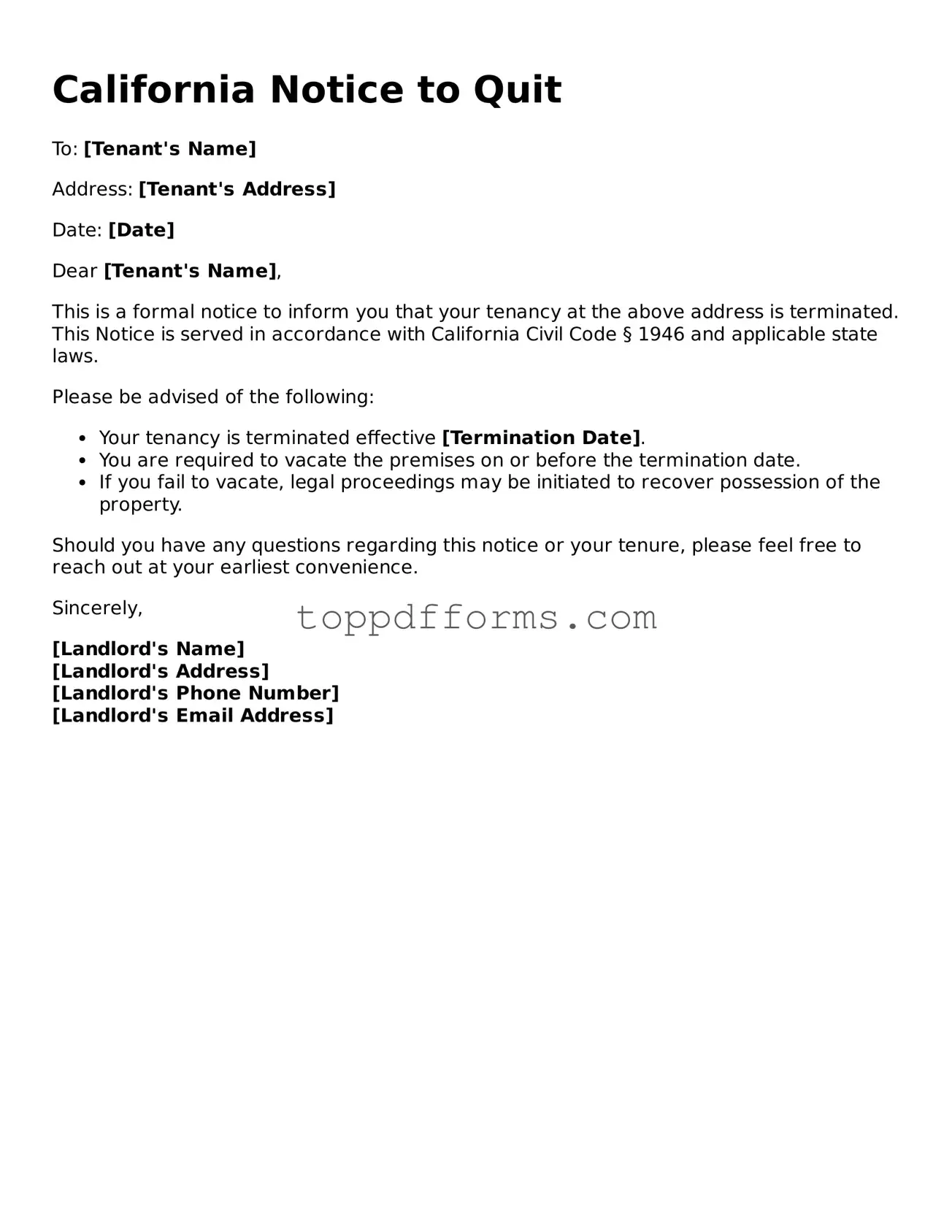What is a California Notice to Quit form?
The California Notice to Quit form is a legal document used by landlords to inform tenants that they must vacate the rental property. This notice is typically issued when a tenant has violated the terms of their lease or rental agreement, such as failing to pay rent or engaging in illegal activities. It serves as a formal request for the tenant to leave the premises within a specified timeframe.
How long does a tenant have to respond to a Notice to Quit?
The timeframe for a tenant to respond to a Notice to Quit can vary based on the reason for the notice. Generally, if the notice is due to non-payment of rent, the tenant has three days to pay the overdue rent or vacate the property. For other lease violations, the notice may provide a longer period, often 30 days, for the tenant to rectify the issue or leave.
What happens if a tenant does not comply with the Notice to Quit?
If a tenant fails to comply with the Notice to Quit, the landlord may proceed with legal action to evict the tenant. This process typically involves filing an unlawful detainer lawsuit in court. It’s important for landlords to follow proper legal procedures, as any misstep can delay the eviction process or result in the dismissal of the case.
Can a tenant contest a Notice to Quit?
Yes, a tenant can contest a Notice to Quit. If a tenant believes the notice was issued unfairly or without valid grounds, they can present their case in court. It is advisable for tenants to gather any relevant documentation and evidence to support their position. Legal representation may also be beneficial in navigating the court process.
Is a Notice to Quit the same as an eviction notice?
No, a Notice to Quit is not the same as an eviction notice. The Notice to Quit is a preliminary step that informs the tenant they must leave the property. An eviction notice, or unlawful detainer, is a legal document that follows if the tenant does not comply with the Notice to Quit and the landlord seeks formal eviction through the court system.
Does a Notice to Quit have to be in writing?
Yes, a Notice to Quit must be in writing to be legally valid. It should clearly state the reason for the notice, the timeframe for compliance, and any relevant details about the lease or rental agreement. Providing a written notice helps ensure that there is a record of the landlord's request for the tenant to vacate the premises.
Are there any specific requirements for serving a Notice to Quit in California?
Yes, there are specific requirements for serving a Notice to Quit in California. The notice can be delivered in person to the tenant, left with someone at the rental property, or mailed to the tenant’s address. It is crucial for landlords to follow these guidelines to ensure the notice is legally effective. Keeping a copy of the notice and any proof of service is also recommended for future reference.
